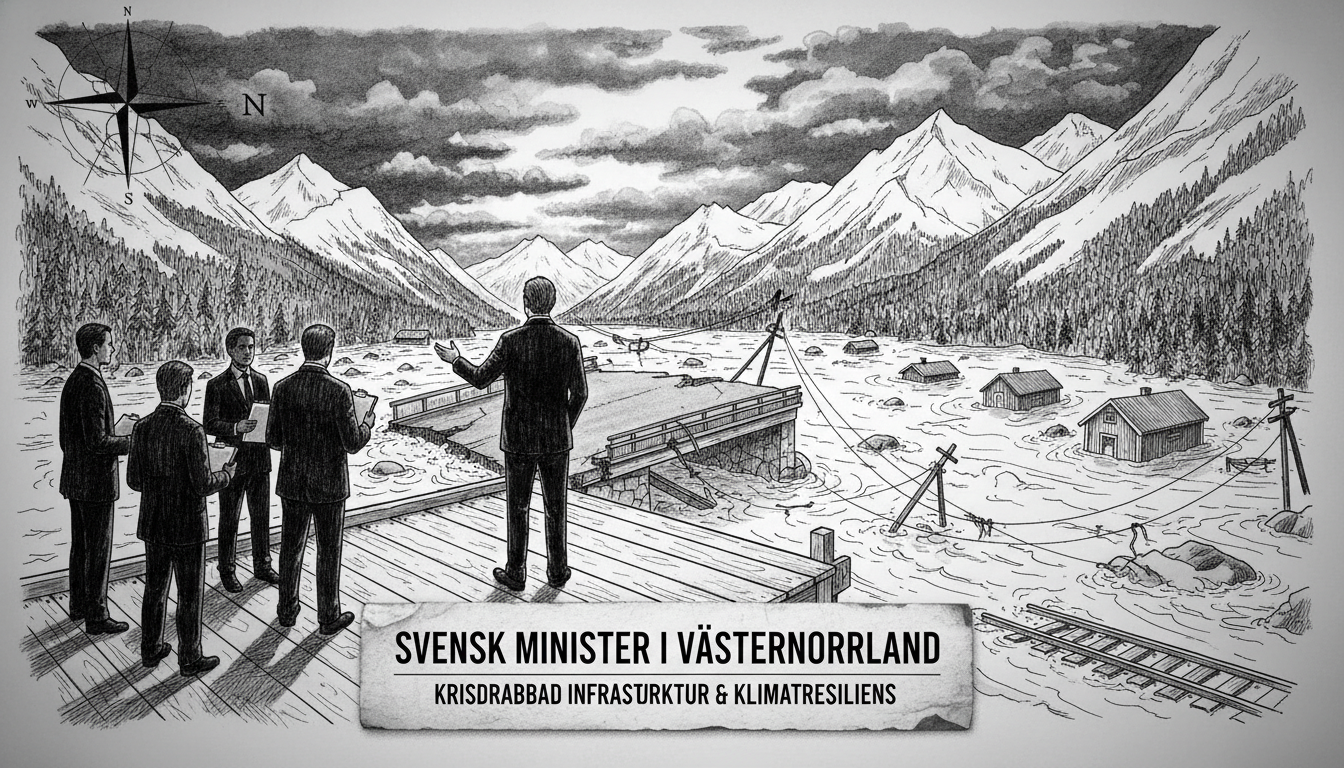Sweden's infrastructure minister faced intense questioning about the widespread consequences of recent flash floods in Västernorrland County. The minister appeared before journalists to address concerns about damaged roads, disrupted railways, and transportation chaos affecting local communities.
Andreas Carlsson defended his government's infrastructure planning during the televised session. He revealed that half of Sweden's latest major transportation budget focuses on road and railway maintenance. The minister emphasized the urgent need to address maintenance backlogs that have accumulated over years.
Carlsson stated, 'We must stop the bleeding. The maintenance debt cannot continue to spiral out of control.' His comments came as residents in affected areas reported being cut off from essential services due to washed-out roads and damaged infrastructure.
The flooding in Västernorrland represents a growing pattern of extreme weather events testing Sweden's infrastructure resilience. Northern Swedish counties have experienced increasing precipitation levels in recent years, challenging existing drainage systems and transportation networks. This situation highlights the tension between maintaining aging infrastructure and responding to climate-related emergencies.
Local officials report that several key highways remain partially closed, forcing commuters to take lengthy detours. Railway services between Sundsvall and Örnsköldsvik have experienced significant disruptions, affecting both passenger travel and commercial transport.
The minister's appearance before journalists reflects growing public pressure for accountability regarding infrastructure preparedness. Many Swedes question whether maintenance budgets adequately address the increasing frequency of extreme weather events. The government now faces difficult choices between new construction projects and essential maintenance of existing transportation networks.
This situation in northern Sweden mirrors challenges faced by other Nordic countries dealing with aging infrastructure and changing climate patterns. Norway and Finland have similarly grappled with maintaining remote road networks amid increasing precipitation and extreme weather events.
What comes next for Västernorrland's transportation system? Regional authorities await emergency funding approvals while temporary repairs continue. The full cost of damages remains unclear, but early estimates suggest millions will be needed to restore critical infrastructure to pre-flood conditions.

